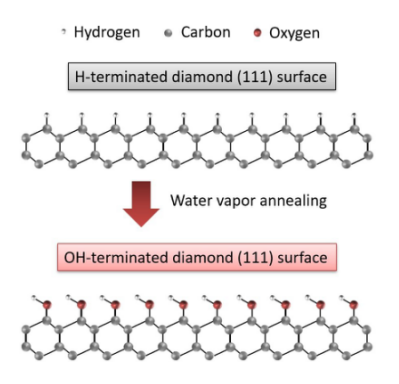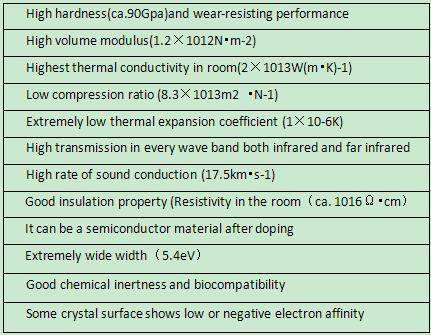Company tel:+86-379-63184520
Contact number:+86-15937921751
Postcode:471000
Email:info@yuxindiamond.com
Address:3-1-508 Luoyang National University Science Park, No. 2 Penglai Road, Jianxi District, Luoyang, China 471000
Water Vapor Annealing Technique on Diamond Surfaces for Next-generation Power Devices
Diamonds are often displayed in exquisite jewelry. But this solid form of carbon is also renowned for its outstanding physical and electronic properties. In Japan, a collaboration between researchers at Kanazawa University's Graduate School of Natural Science and Technology and AIST in Tsukuba, led by Ryo Yoshida, has used water vapor annealing to form hydroxyl-terminated diamond surfaces that are atomically flat.
Diamond has many characteristics that make it attractive for application in electronic devices. However, diamond contains defects that are observable at the atomic level that create unique surface properties influencing how it can be applied in such devices.
Surface termination using oxygen or hydrogen stabilizes the diamond structure. Hydrogen-terminated (H-terminated) diamond surfaces contain two-dimensional hole gas layers (2DHG) that allow high-temperature and high-voltage operation. Oxygen-terminated diamond surfaces are formed by surface oxidation of H-terminated surfaces, which removes carbon-hydrogen (C-H) bonds and 2DHG, "but this roughens the diamond surface and leads to the degradation of performance of devices," says Norio Tokuda from Kanazawa University.

To overcome this, the researchers applied the water vapor annealing. They began with (111)-oriented high-pressure, high-temperature synthetic single-crystalline diamond Ib and IIa substrates. Homoepitaxial diamond films were grown on the Ib substrates via microwave plasma chemical vapor deposition (MPCVD). To obtain atomically flat H-terminated surfaces, the diamond samples were exposed to H-plasma in the MPCVD chamber. To form hydroxyl-terminated surfaces, the H-terminated diamond samples were subjected to water vapor annealing. The annealing treatment occurred under an atmosphere of nitrogen bubbled through ultrapure water in a quartz tube in an electric furnace.
The results indicated that C-H bonds remained on the diamond surface during water vapor annealing below 400°C; therefore, 2DHG was detected. "However, water vapor annealing above 500°C removed C-H bonds from the diamond surface," explains Yoshida, "indicating the disappearance of the 2DHG."
Thus, the results indicate that water vapor annealing can remove 2DHG while maintaining the surface morphology of (111)-oriented diamond surfaces. "Compared with conventional techniques to remove 2DHG, such as wet chemical oxidation," says Tokuda, "water vapor annealing offers the advantage of maintaining an atomically flat surface."
Diamond, as one of the most special materials in natural world, is featured with the highest hardness, low friction coefficient, high elasticity modulus, high thermal conductivity, high insulation class, wide energy gap, great sound propagation rate and favorable chemical stability, which are presented in below Table. In spite of such unique features, the natural diamond has always been existed in the form of gem, with its variability and rareness sharply limiting its application. Luoyang Yuxin Diamond Co., Ltd‘s CVD Diamond film, on the other hand, integrates such physical and chemical properties, with lower cost than natural diamond and applicable to be made into various shapes, thus enjoying extensive application prospect in electronic industry, optical field and mechanical industry.








